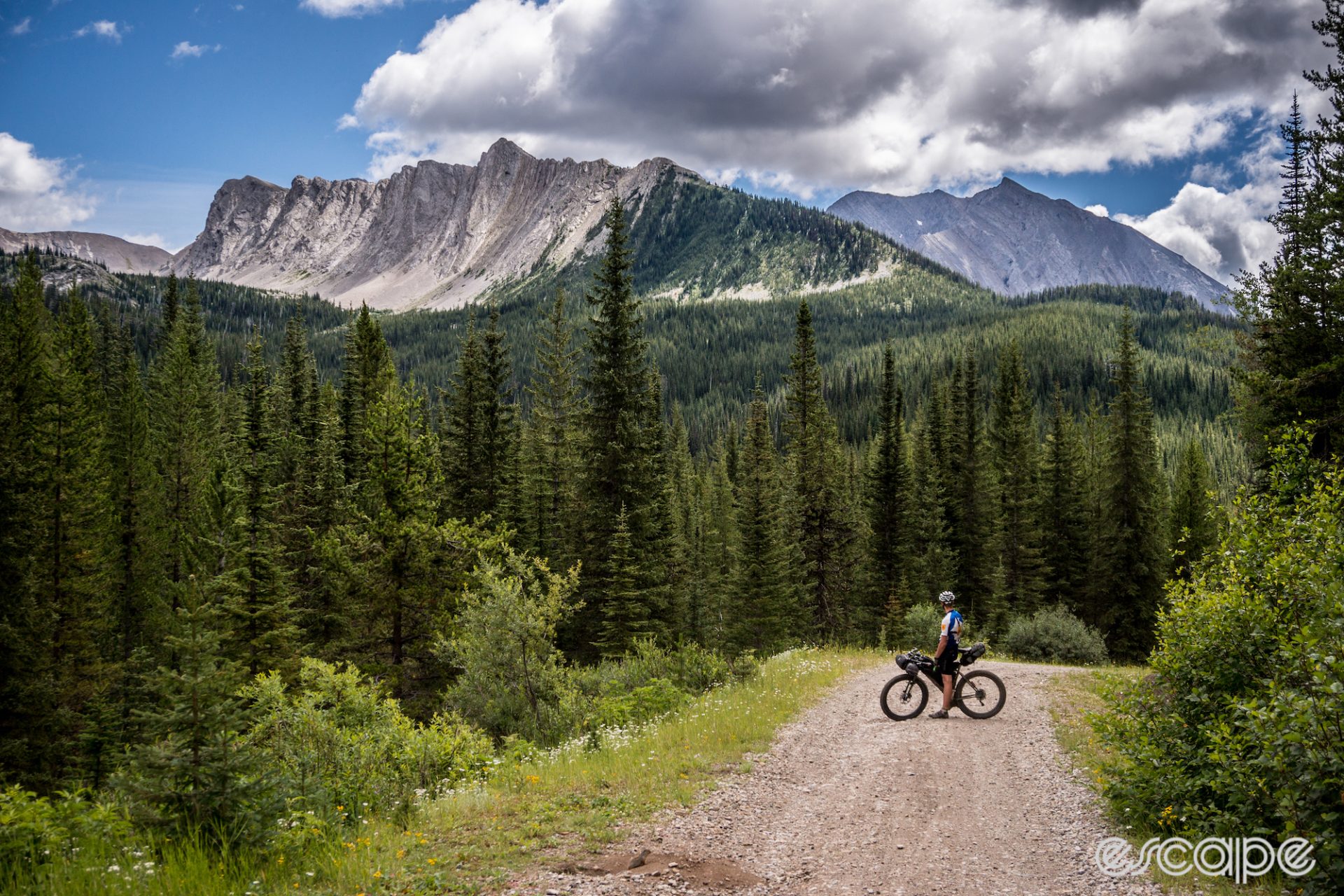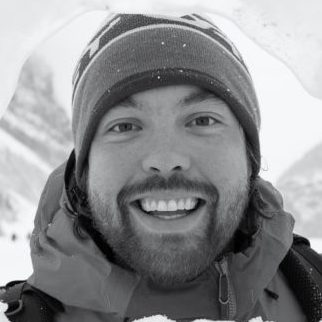When I called Kathy Schoendoerfer, co-owner of The Blackfoot Angler in Ovando, Montana, she put me on hold as she helped a customer buy a fishing license and tackle. It’s known as the “best little fly shop on the Blackfoot River” and Kathy keeps it stocked with the largest fly collection between Missoula and Great Falls. But tucked away in the corner of the shop is a collection of bike parts. It’s been picked through, but the staples remain: patch kits, tubes, and chain lube.
For about a week each summer, The Blackfoot Angler becomes a bikepacking lifeline. It sits at mile 533 along the Tour Divide race route that stretches 2,700 miles/4,400 km from Banff, Alberta, to Antelope Wells, New Mexico. While the race leaders arrive within 48 hours of starting, it’s also far enough into the race that the final competitors won’t arrive for another week.
“If I don’t get any customers,” says Schoendoerfer, “it means cyclists are having a good day. I am here to help with bike repairs. I’ve had people break into tears when they see we have a 29” tire or a spare cleat for a clipless pedal.”

Before the Tour Divide, Ovando was barely known in Montana. Now it’s part of bikepacking lore because the entire town bought into the event. Accommodation in their old jail, covered sheep wagon or teepee costs $5 and proceeds go towards the Ovando Improvement fund. The Stray Bullet serves breakfast and sandwiches, while Trixies is an all-day saloon with meals served late into the evening.
The backstory of bikepacking
In many ways, bikepacking is still relatively new. For many of us, the word bikepacking didn’t exist until the 2010 documentary film Ride the Divide showcased seven riders tackling the first ever Tour Divide race. To this day, bikepacking and Tour Divide remain closely linked; however, it’s hard to understand the scope of the race without first embracing the sport.
“The beauty of a sport like bikepacking is that it is for everyone,” says Allan Shaw, founder of Gay’s Okay Cycling and Tour Divide veteran. “Throwing a tent and a sleeping bag in a backpack and hopping on your bike for a night or two (or more) is fairly accessible to most. Bikepacking, at its core, is egalitarian and inclusive.”
The mantra ‘run what you brung’ runs deeply through bikepacking. Pick the terrain to suit your bike and riding preferences and carry enough food and clothing to make it between resupply points. Secure it all in either custom frame bags and seat packs or a handful of old drybags attached with Voile straps. Thousands of established routes exist online and it’s never been easier to create your own with apps like RidewithGPS and Strava. Whether opting to camp or stay in a hotel, it is just a matter of linking two or more days together.
“The most important attribute for your bikepacking adventures is desire, trust in yourself, just the right amount of caution and a whole lot of adaptability,” Shaw said. “Be ready to give up on perfectionism and just rock what you got, because it’s more than enough.”
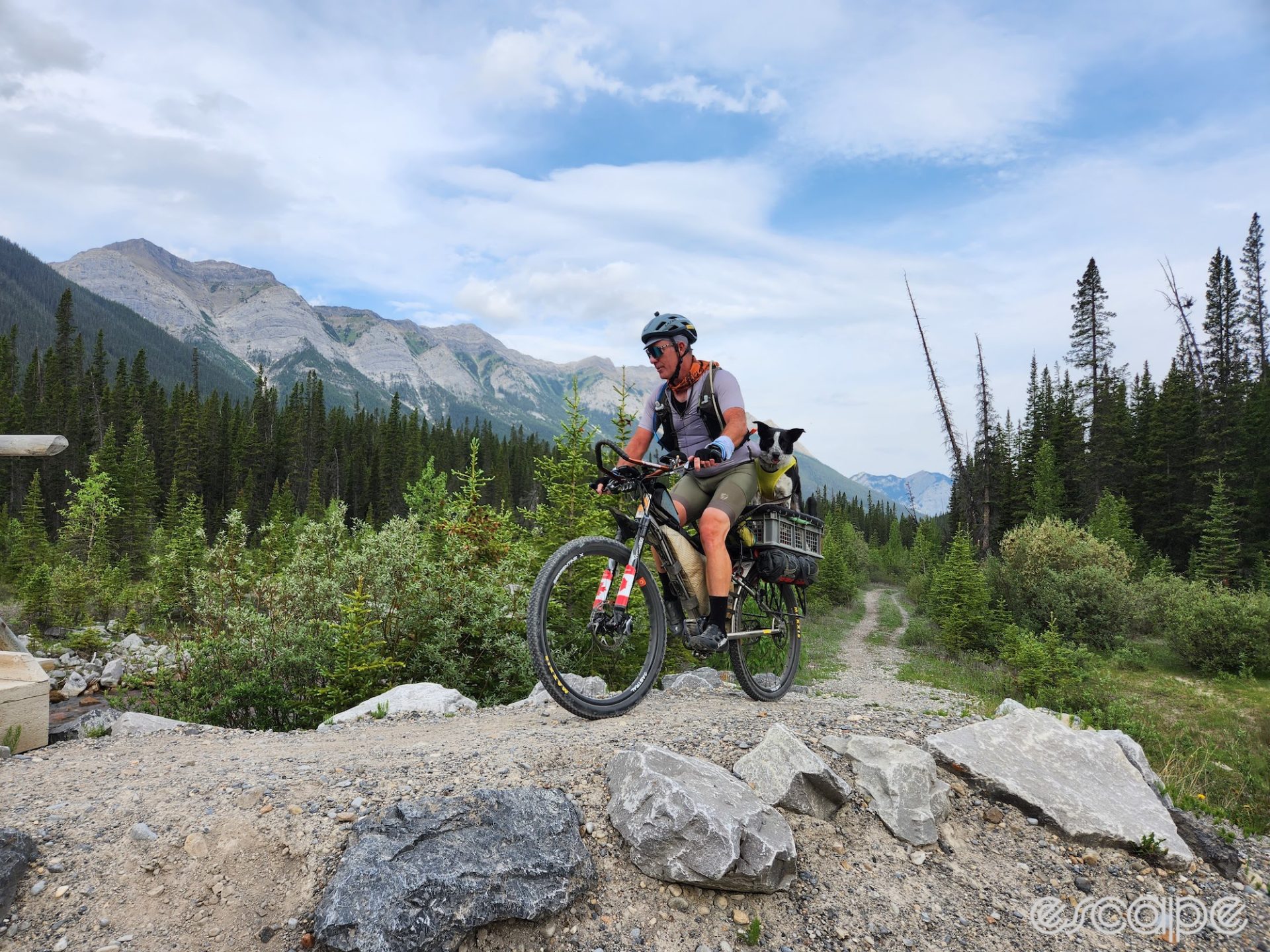
Bikepacking’s booming popularity is truly participation driven. Last year, the Swift Campout attracted 3,500 registered participants, who hosted rides around the globe. This year’s event, scheduled for June 24-25 promises to be even bigger. The bikepacking race calendar continues to expand, as well, with key events from Kyrgyzstan to Colorado. Popular events like Badlands and Silk Road Mountain Race have introduced entry fees, formal rules, and general organization expected of official events, but the Tour Divide remains the sport’s signature event.
Ride the Divide
In simple terms, the Tour Divide is a bikepacking race from Banff, Alberta, to Antelope Wells, New Mexico. It’s 2,685 miles/ 4,321 km long and includes 165,644 ft / 50,488 m of climbing. The original route was based on the Adventure Cycling Association’s Great Divide Mountain Bike Route, but the race route evolves each year. It never gets easier. The Canadian section has seen significant changes in recent years, adding singletrack sections along the High Rockies Trail and a rugged hike-a-bike climb called Koko Claims.
The race is still largely unofficial with a set Grand Depart start date on the second Friday in June. It’s raced as a single stage, meaning the clock runs continually. The first rider to Antelope Wells, New Mexico, is declared the winner. Rather than prize money or podium photos, they’re greeted by the same logistical challenge of getting back to civilization from one of the USA/Mexico’s most remote border crossings, that the last place rider endures.
Like any event, there are rules but there’s no course marshall to enforce them. Instead, they’re governed by sportsmanship and, in more recent years, race supporters across social media. While participating in the Grand Depart is encouraged, bikepackers can challenge the course in an individual time-trial (ITT) format at any time. The majority of the rules reference the spirit of the event. It must remain self-supported, outside assistance and pre-arranged support is prohibited. Competitors are only allowed publicly available services for food, accommodation and bike repair. Emotional support has become a highly-controversial topic in recent years, specifically regarding visitation along the route and film crews documenting specific riders.
How to follow the race
It isn’t overly spectator friendly; as the race progresses south, it’s not uncommon for weeks to separate first and last place. But you can watch the race play out on Trackleaders, a website dedicated to ultra-distance bikepacking races. Each racer carries a GPS tracker and it’s represented by the racers’ initials in blue (mens), pink (womens), or yellow (ITT) dots on the website. The bright-green broom wagon dots act as a time cutoff. Men averaging less than 95 miles per day and women pacing under 85 miles per day are considered touring rather than racing and they’re relegated to a white dot.
The course records also appear as smaller blue and pink dots. On the men’s side, the late Mike Hall’s record of 13 days, 22 hours, 51 minutes remains the benchmark, followed by Chris Plesko’s single speed record of 15 days, 8 hours, 4 minutes set the same year. Lael Wilcox (15 days, 10 hours, 59 minutes) and Alexandera Houchin (18 days, 20 hours, 26 minutes) own the womens’ overall record and single speed record, respectively, and they’re both on course again this year.
On June 9th, 200 riders started in Banff. It’s been a fast edition so far, with three riders – Ulrich Bartholmoes, Jens Van Roost, and Justinas Leveika – are riding close together at, or near, record pace. Overall, it’s an interesting field this year, with notable riders spread across the leaderboard. Alex Howes hopes to become the first Tour de France and Tour Divide finisher.
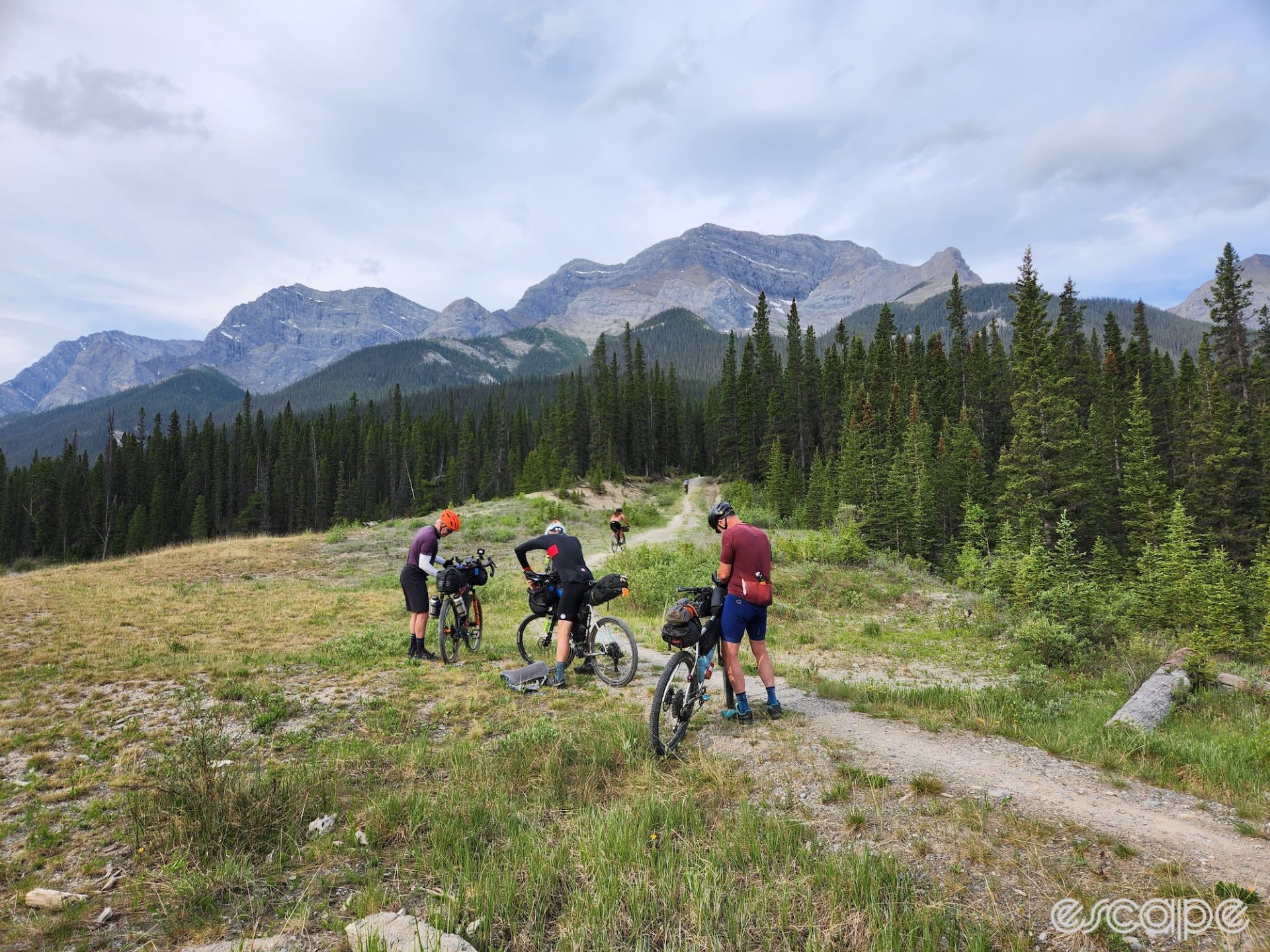
“I’m a privateer now,” said Howes, “so I get to be my own boss and I wanted to do Tour Divide when I still have the fitness. I spent 10+ years on the World Tour. I experienced the F1 of our sport, but this is the working person’s version. I want to see how they’re the same and how they’re different.”
His ride has been plagued by mechanical issues since the beginning. After several attempts to fix broken spokes on a rear wheel, Howes had to hitchhike off route to Whitefish, Montana, for repairs, before returning to the course.
Adventure photographer Chris Burkard is putting in an impressive rookie performance, sitting in 4th place and on pace for a 15-day finish. John and Mira show up as a green dot, as they’re dogpacking the Tour Divide on a 22-day pace. Ted King is the first notable DNF, forced to withdraw after being diagnosed with Rhabdomyolysis. He had employed a different strategy than most. Rather than focus on sleep deprivation and endurance, he was riding nearly 2 mph faster than the race leaders, but taking extended sleep breaks. At 51, Bear Stillwagon is at least 13 years older than the 11 riders in front of him. Prior to this year’s race, Tour Divide veteran Sarah Swallow shared her Ultimate Race Resource with RideWithGPS that details food resupply points along the entire route. She’s currently about 100 miles ahead of the broom wagon. About a dozen riders have fallen behind the required pace already.
Dotwatcher.cc provides the Trackleaders map and more context through regular updates posted by Peta Mc Sharry, with contributions from former racers and trailside spectators. Tour Divide veteran Josh Ibbett is doing regular race reports on his YouTube channel, while Other notable coverage is being shared on social media. Howes is sending video clips to @MythicalStateof to edit into regular updates. Bartholmoes (@ubartholmoes) is posting Instagram stories from the front of the race. Laurens Ten Dam (@Laurens_ten_dam) has been keeping a close eye on the leaders, while hinting that he’ll be on the startline someday soon enough. Sarah Sturm (@Sarahsturmy) has been keeping an eye on the women’s race.
Back in Ovando, Schoendoerfer continues to take photos of every participant that comes through town. She does it every year and publishes them on the Blackfoot Angler Facebook page, well-known among racers and their families. Thanks to her ongoing contributions and unwavering support, Schoendoerfer is known as a trail angel. It’s a role played by many along the route, from shop owners extending operating hours to innkeepers interrupting their normal business to host racers.
Will we see a new record?
Kirsten Henricksen, who runs Brush Mountain Lodge in Colorado, is part of nearly every Tour Divide story.
“It was a unique opportunity to hang out with crazy people,” she said. “When it was first here, there weren’t many people and it’s grown every year. I really appreciate the self-supported nature. It’s endearing to me that they do it for nothing other than the accomplishment.”
Brush Mountain Lodge sits just after the route’s halfway point and on the first mountain pass in Colorado. She watches Trackleaders diligently.
“It’s exciting that [the leaders are] all Tour Divide rookies,” she said, “and they’re coming at it hard. They might be here faster than Mike, so I expect them tomorrow morning.”
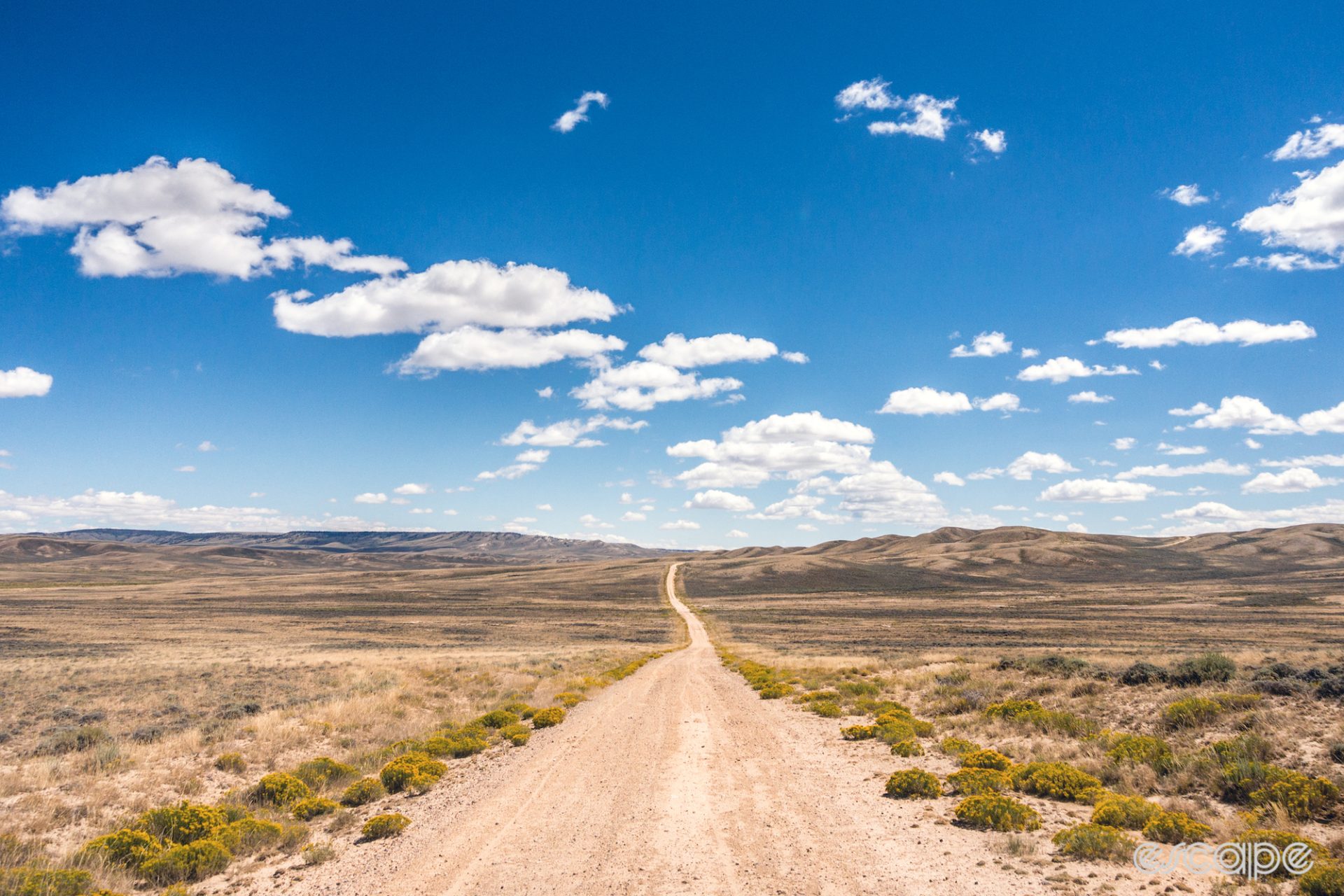
The last time Mike Hall’s record was threatened, previous record holder Josh Kato and perennial front-runner Sofiane Sehili led the way when a rogue snowstorm ground the race to a standstill just after the lodge. Neither Sehili nor Kato finished that year. This year, the three race leaders were slowed by mud in the Great Basin and fell behind Mike Hall’s record-dot overnight. While these three remain the favorites, Burkard and Joe Nation are closing in on the front. Anything can happen over the next half of the race. Mechanical issues, weather changes, and fatigue will surely play a role. The latest post on Dotwatcher, from 2019 finisher Janie Hayes, reports snow-free conditions across the highest passes in southern Colorado, as well, but it’s still too early to predict an outcome. It’s anybody’s guess who’ll reach the US-Mexico border first.
If you’re new to dot watching, don’t fret. The racing doesn’t end with the Tour Divide. It’s just the first leg of the Triple Crown, along with the Colorado Trail (August) and Arizona Trail Race (October). Racing all three is an ambitious challenge that just 29 people have completed over multiple seasons. Finishing them all in a single year is known as the Triple Crown Challenge, and it’s only been done 13 times. Both Ana Jager and Chris Stempke completed the challenge in 2022 and set singlespeed records (and a women’s record for Ana), but the outright record for all three was set by Jay Petervary in 2015, at 27 days, 18 hours, 33 minutes.
Wilcox, who’s currently leading the women’s field and outpacing her 2015 record on the Tour Divide, has her eyes set on besting Petervary’s mark.
What did you think of this story?
